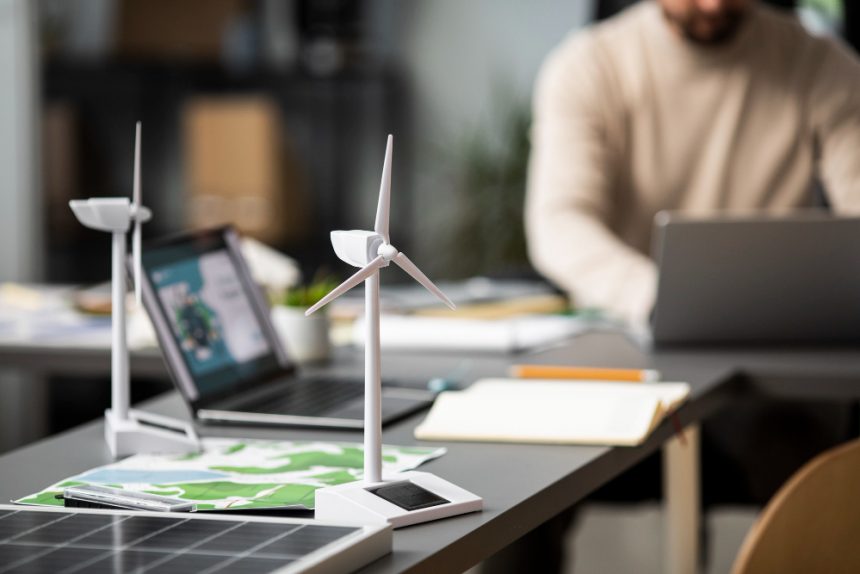In our tech-driven world, it’s easy to think of computers, smartphones, and internet apps as just tools for communication, entertainment, or work. But increasingly, technology—specifically Information Technology (IT)—is stepping up as a powerful ally in the fight against climate change. From making cities smarter to giving businesses better tools for sustainability, IT innovations are actively helping reduce our collective carbon footprint. Let’s explore how this all works and why it’s so exciting!
Harnessing Technology to Tackle Climate Change: How IT Innovations Are Making a Real Difference in Reducing Our Carbon Footprint
Let’s start with the big picture: climate change is a massive challenge that demands innovative solutions, and technology is a key player in this game. For instance, in the realm of city planning, smart cities are transforming urban living. These cities use a network of IoT sensors—tiny devices embedded in buildings, streets, and public transport—to gather data in real-time. This information helps city managers optimize everything from lighting and heating to traffic flow, drastically reducing energy waste. For example, streetlights equipped with motion sensors can turn off when no one’s around, saving electricity.
Another tech revolution comes from cloud computing. Instead of companies maintaining massive, power-intensive physical servers on-site, many are shifting their data storage and applications to cloud services hosted in highly efficient data centers. These modern data centers are designed to use less energy per unit of data processed, making it more sustainable than traditional infrastructure. Plus, the cloud allows for remote work and collaboration, reducing the need for commuting and travel—significant contributors to carbon emissions.
AI and data analytics are also at the forefront, helping us understand and predict environmental trends better. By analyzing climate data, AI models can forecast weather patterns, track deforestation, or monitor air quality, enabling organizations and governments to respond faster and make smarter decisions. For instance, predictive analytics can optimize energy consumption in factories or buildings, ensuring resources are used more efficiently with minimal waste.
And it’s not just big corporations and city planners getting involved—everyday users like you and me can participate. There are countless eco-friendly apps to track your carbon footprint, smart thermostats that adjust household temperature based on your habits, and even solar-powered gadgets that help cut down energy use. All these tools put sustainable choices right at our fingertips, making it easier than ever to live greener.
In essence, these IT innovations create a seamless, integrated approach to reducing environmental impacts. They empower cities, businesses, and individuals to make smarter decisions—proving that technology isn’t just about convenience, but about creating a sustainable future.
How Digital Transformation and Smart Solutions Are Shaping a Greener Future for Business and Everyday Life
The shift towards digital transformation isn’t just shaking up industries; it’s also reshaping our planet’s future. More companies are adopting green IT practices—think virtual servers, energy-efficient data centers, and digital workflows—which help cut down on energy use and slash greenhouse gases.
One great example is virtualization, where multiple virtual machines run on a single physical server. Compared to traditional servers, virtualized setups use fewer resources and generate less heat, decreasing the need for heavy cooling systems. Leading companies are also investing in LEED-certified data centers designed specifically for energy efficiency, using renewable energy sources whenever possible.
On the supply chain side, blockchain technology provides transparency and traceability, allowing consumers and companies to verify that products were produced sustainably. This encourages more responsible sourcing and reduces environmental degradation caused by illegal or unsustainable practices.
Meanwhile, smart home devices are making everyday life more eco-friendly. Devices like smart thermostats learn your schedule and adjust temperature settings to save energy, while energy monitors give you real-time feedback on your electricity use. Coupled with eco-friendly appliances, these tools help households cut their carbon emissions significantly.
Remote work also plays a big role here. Thanks to reliable telecommunication tools—video conferencing, cloud collaboration platforms—more people can work from home, reducing the need for daily commuting and business travel. Fewer cars on the road means less air pollution and lower greenhouse gas emissions.
Finally, advancements in renewable energy management are opening new doors. Through IoT sensors and AI algorithms, energy producers can better monitor and control solar panels, wind turbines, and energy storage units. This makes renewable sources more efficient and easier to integrate into existing power grids, accelerating our transition away from fossil fuels.
All these smart solutions are creating a cycle of positive change, making sustainability part of everyday routines and business practices. The more we leverage digital tools, the more we can minimize environmental impact, paving the way for a cleaner, greener planet for generations to come.
Wrapping Up
It’s clear that IT isn’t just about transforming the way we live and work; it’s also a vital tool in combating climate change. Innovative technologies like smart city systems, cloud computing, AI, and digital solutions for energy management are making it easier to reduce our carbon footprint—whether on a city scale or in our own homes.
The good news is that every single one of us can play a part. By choosing eco-friendly apps, supporting sustainable brands, and using smart gadgets, we’re contributing to a more sustainable future. Through continued innovation and collective action, technology can help us create a healthier planet—one smart solution at a time.









